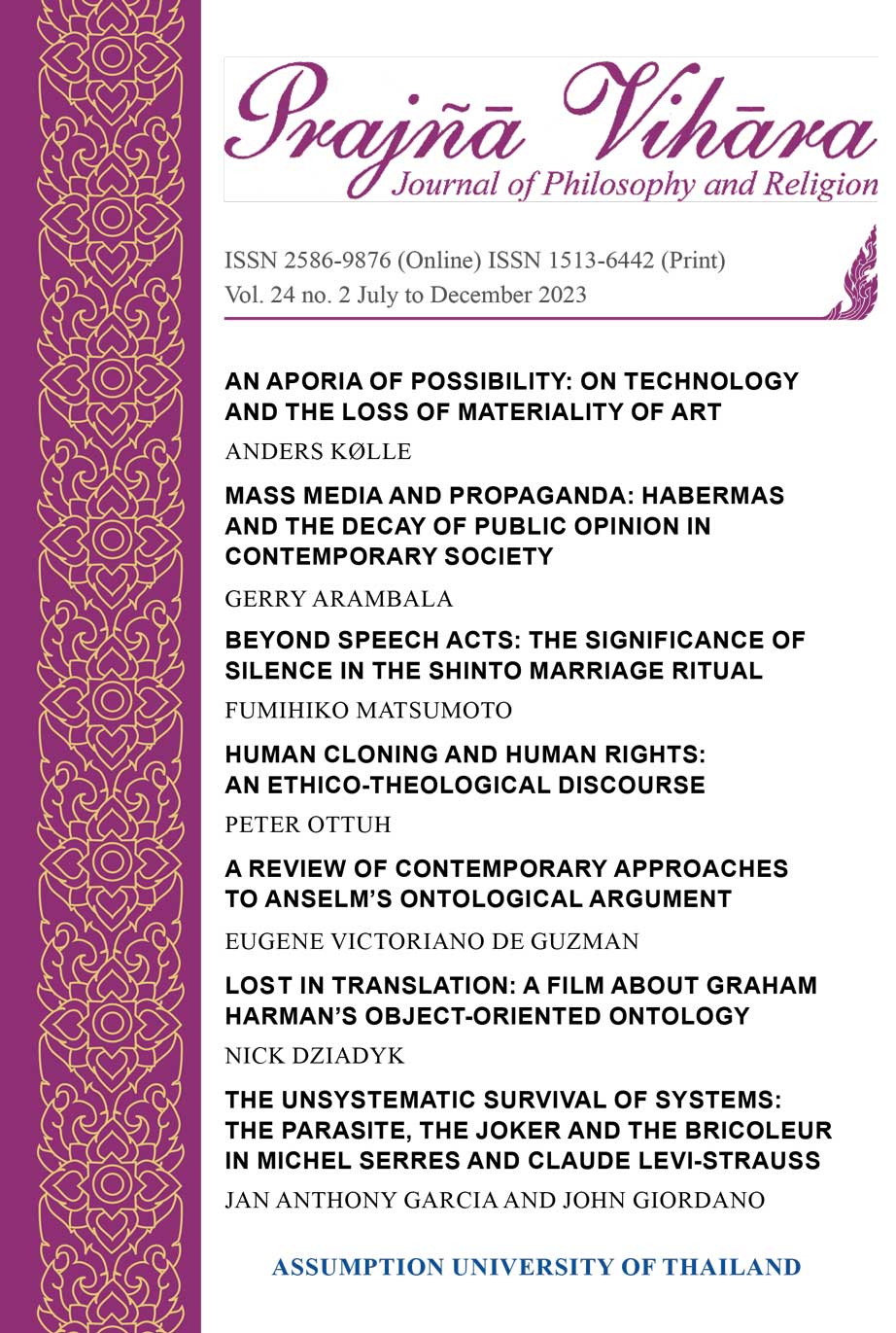AN APORIA OF POSSIBILITY: ON TECHNOLOGY AND THE LOSS OF MATERIALITY OF ART
Keywords:
the end of art; technology and automation; André Leroi-Gourhan; the hand; materiality of artAbstract
Numerous art historians and art critics have announced the death of art. From Arthur C. Danto´s Hegelian analysis to Hans Belting´s Kantian reading, art's fate seems sealed and its potentials exhausted. These approaches either claim that art has become pure idea and is thus no longer art but philosophy, or that art has so lost itself in the myriad of it's possibilities that the artistic schools, periods and traditions which once provided it's stability has vanished . In the following article, the crisis of contemporary art is analyzed from a third and strictly material perspective. Drawing on the thinking of André Leroi-Gourhan, the article proposes to look at art´s current crisis as a direct result of the changed relations between the human and matter or between the hand and materiality, that modern technologies and processes of automation have produced. Where the human hand becomes increasingly superfluous, the ties to the material world that used to steer and guide artists is equally lost.
References
Adorno, Theodor W. Aesthetic Theory. Minneapolis: University of Minnesota Press, 1998
Barthes, Roland. The Responsibility of Forms. New York: Farrar Straus & Giroux, 1985
Belting, Hans. Art History after Modernism. Chicago: The University of Chicago Press, 2003
Belting, Hans. An Anthropology of Images: Picture, Medium, Body. Princeton: Princeton University Press, 2014
Danto, Arthur C. After the End of Art: Contemporary Art and the Pale of History. Princeton: Princeton University Press, 2014
Danto, Arthur C. What Art Is. New Haven: Yale University Press, 2014
Leroi-Gourhan, André. Gesture and Speech. Cambridge: Massachusetts Institute of Technology, 1993
Leroi-Gourhan, André. Treasures of Prehistoric Art. New York: Harry N. Abrams, 1967
Leroi-Gourhan, André. The Hunters of Prehistory. New York: Atheneum, 1989
Lyotard, Jean-Francois. The Postmodern Condition: A Report on Knowledge. Minneapolis: University of Minnesota Press, 1984
Siegel, Jeanne. Artwords – Discourse on the 60s and 70s. New York: Da Capo Press, 1992
Svendsen, Lars. A Philosophy of Boredom. London: Reaktion Books, 2005
Downloads
Published
Issue
Section
License
Consent to Publish and Transfer of Copyright
By publishing in Prajñā Vihāra, the author agrees to transfer and assign to Assumption University of Thailand as the Publisher of the Journal, the copyright to the Article in any form, including any and all rights, interests and claims related to it.
The author does retain the following rights:
- The right to make further copies of the published article for their use in classroom teaching.
- The right to reuse all or part of the published article in a compilation of his or her own works or in textbooks of which they are the author or coauthor.
- The right to make copies of the published article for internal distribution within their academic institution.
- All proprietary rights other than copyright, such as patent rights.
- The Article is his or her original work, and has not been published previously and is not under consideration for publication elsewhere.
- It does not contain any matter that is obscene, libelous, or contrary to law.
- They have obtained the necessary license or written authority and paid any and all related fees for the use and reproduction of text, tables, illustrations and other copyrighted work from the owners of the intellectual property rights, and can furnish the Publisher copies of the license/written authority and proof of payment of related fees upon the signing of this Agreement.
- They have the consent of the Co-Authors of the article upon the signing of this Agreement.
- In the event that they intend to republish, reprint or translate all or part of the Article in other publications, they will secure the prior written permission from the journal Editor.
Prajñā Vihāra adopts the Creative Commons Attribution (CC BY-NC-ND) license


